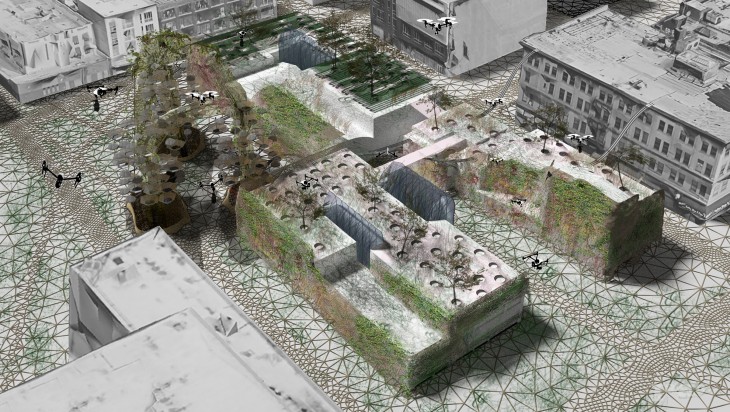
Hybritat is a proposal for a city system operated by autonomous robots and drones working together in a swarm to provide diverse and balanced conditions for flora and fauna to re establish itself within the urban tissue.
City and Nature
Hybritat is an investigation on how to overcome a paradigm in which contemporary urbanization patterns contribute to destruction of ecosystems and loss of biodiversity. Cities have from the beginning and still are entirely human made environments shaped to separate and protect humans from the natural world, allowing selected bits in and banishing others. But in reality, cities with their landscapes of concrete and glass do not exist as isolated islands. The way cities work today, almost all the resources that a city and its inhabitants need to survive comes from the nature around the city. The air we breathe, the water we drink, the food we eat, the energy we consume, and so on. Depending on how resource hungry its citizens are, a city can use areas of land many factors larger than its own footprint. The paradox lies in the way cities expand. Common urbanization patterns include excavating soil, rerouting water streams and turning upside down existing ecosystems, replacing them with predictable materials such as concrete, asphalt and steel. By doing so we destroy or “eat” the very basis on which the city can exist.
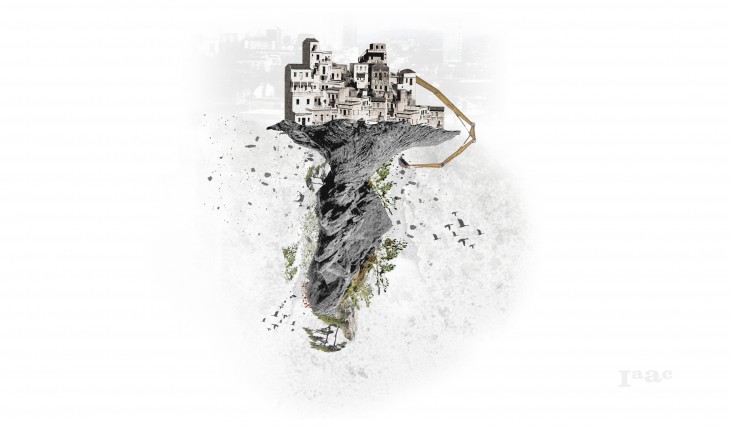
In addition, about 54 per cent of the world’s population lives in urban areas, a proportion that is expected to increase to 66 per cent by 2050. Projections show that urbanization combined with the overall growth of the world’s population could add another 2.5 billion people to urban populations by 2050. With that many people being added to existing and new urbanizations they would need to grow at an almost explosive rate and it becomes ever more important that they grow in a way that they don’t consume nature but rather incorporate the natural world in new and innovative ways. As a response, the Hybritat project proposes a city-wide system operated by autonomous robots and drones working together in a swarm to provide diverse and balanced conditions for flora and fauna to re establish itself within the urban tissue.
NDVI analysis
These maps compare the ‘health’ of vegetation in and around 3 major american cities using Landsat 8 satellite imagery available from NASA. The images are processed using the Nero plugin for Grasshopper to combine different color channels, obtaining NDVI images indicating the level of chlorophyll present in the vegetation. This serves to verify the previously stated condition where the expansion of cities goes on behalf of the surrounding natural territory.
Bioreceptivity
A large part of the research associated with the project was based around the concept of Bioreceptivity, a term referring to the ability of a material to be colonized by living organisms. This is a factor governed by a series of parameters listed below:

It was a goal during the process to try to gather data related to as many of the parameters as possible to make a map of the Bioreceptivity conditions within the existing site located in Newark, NJ. The result was an interactive online platform allowing the user to navigate and visualize different datasets overlaid on a 3d model of the urban block in question.
Relating to the buildings in the site, the data categories are: construction year, abandoned buildings, already colonized by plants and combined Bioreceptivity factor.
While the video above is a screencapture showing the platform in action, the full platform can be accessed through the following link:
http://3d.cl3ver.com/15Th6Z
(for best performance use Firefox or Chrome):
Surfaces
Working with nature and city it was clear from the start that this is about surfaces. According to DeLanda , ‘ the surface of any material object is the site at which one type of matter interfaces with another, and therefore the place where interfacial phenomena take place.’ In the case of Hybritat those matters are city and nature. The exterior surfaces differ from the rest of a solid body because the physical and chemical conditions of the molecules on the surface of a body are very different from that of the molecules contained between the surfaces inside the body. The molecules contained inside the body are surrounded on all sides by similar molecules while those at the surface are only bound to similar molecules on one side, the other side being exposed to other materials and molecules , such as air, water and carbon. In this sense, the surface of any material body is the interface where different matter can interchange. The surfaces in the city become the interface between city and nature, a new urban currency important in the renaturalization process. When seeing my site as a collection of surfaces it also becomes possible to overlay different environmental data and study the conditions that govern how receptive each surface is to host living organisms and animals.
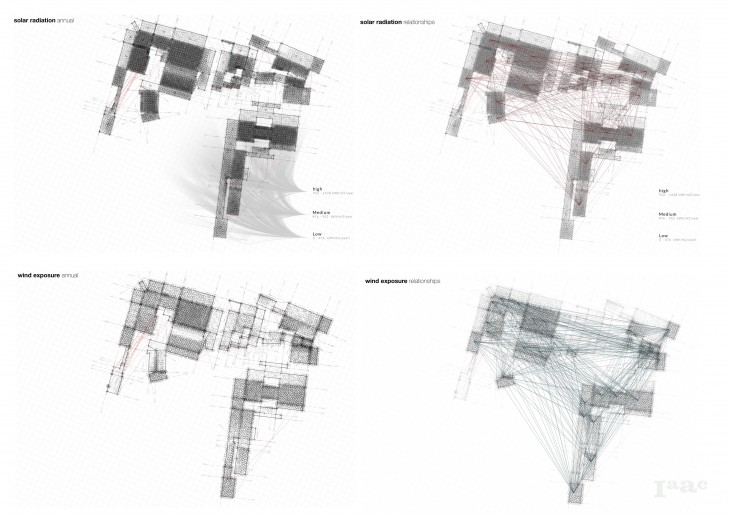
Collection of Surfaces: All exterior surfaces in the site are projected to one plane. Different data is projected on them to understand which relationships they can form between each other and how they can be improved to be more receptive to nature.
Biotopes
From this surface study a master plan is derived, based on creating as many diverse urban biotopes as possible within the site, as a measure to encourage biodiversity. The biotope characterization is based on a logic where surfaces with similar characteristics and sharing common interests are grouped together. These groups will then be part of different systems that will provide them with the resources needed for the particular biotope to be able to maintain itself. For example, surfaces with high solar incidence will be joined together to form a biotope for species with high metabolic photosynthesis that in turn can bind aerial carbon dioxide, provide oxygen and in some cases biofuel.
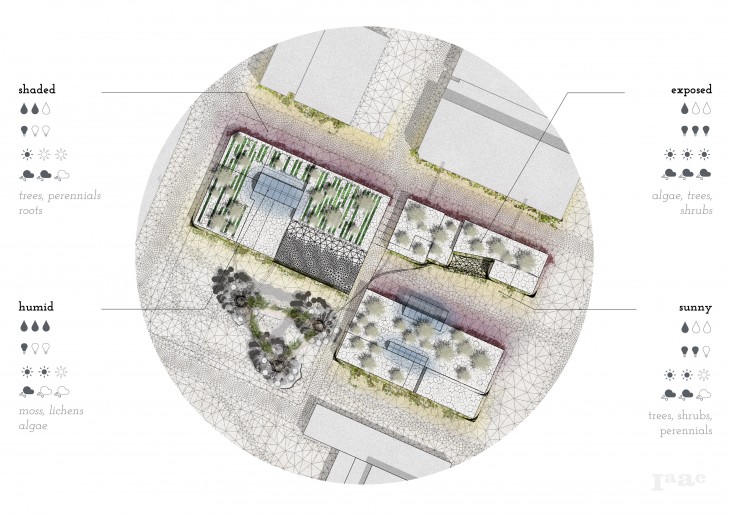
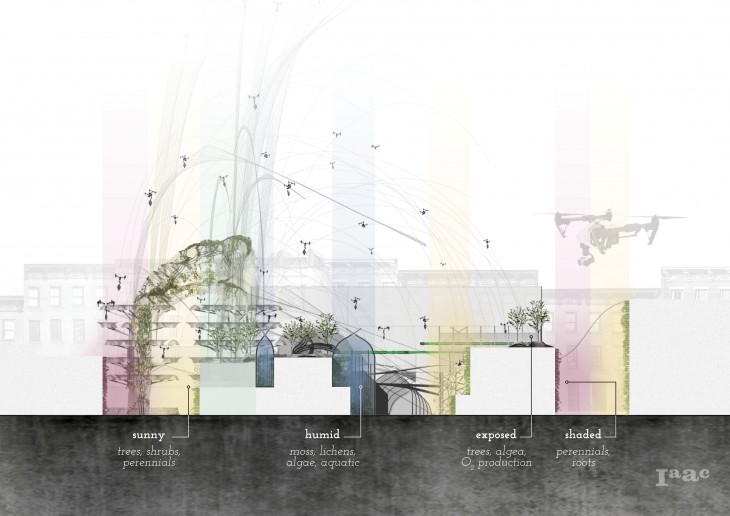
Plan and Section through the site, a series of interconnected biotopes
System 1: Agent Based Resource Distribution
The system consists of a network of aerial and terrestrial robots able to carry and distribute resources needed for wildlife to flourish within the city. These robots or agents belong to a particular docking station where they refill water, nutrition or seeds before distributing them throughout the city, based on geographical information given by analytical surveillance drones equipped with NDVI cameras.
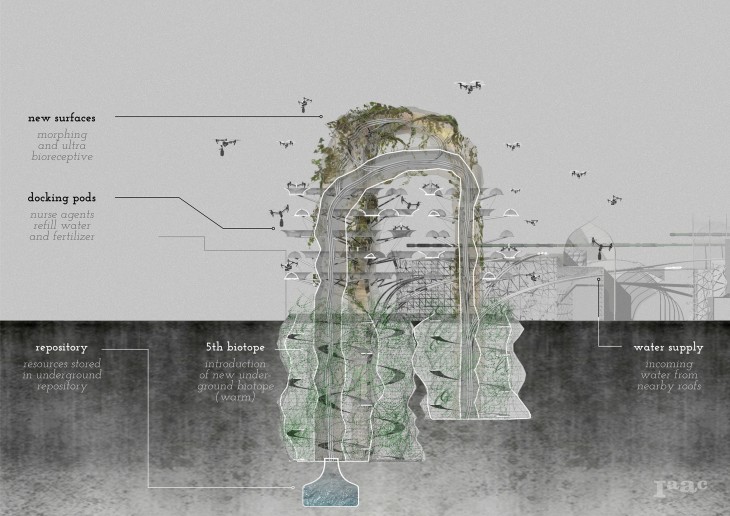
Drone Portal / Resource Hub
The resource hub collects resources such as water, fertilizer and seeds from around the city and stores them in a controlled environment underground. When called upon, these resources are brought to the docking pods where drone agents easily land and pick them up. The form comes from the desire to create an open and easily penetrable structure, facilitating the arrival and departure of drones from all angles, including drones coming in directly from above the building.
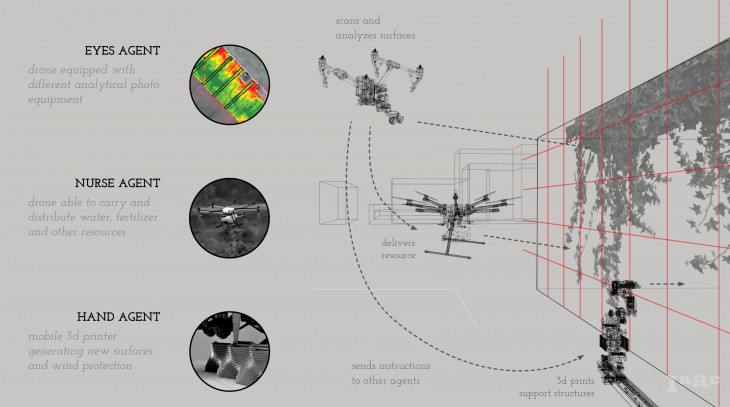
The agent based system
System 2: Wind Protection
The second system is a wind protection system acting as an extra exterior skin for surfaces that are particularly exposed to wind. The wind conditions around the surfaces are analyzed, and the wind protection forms a gradient net, being denser where wind exposure is at its highest. This local density controls the formation and growth of other, more resilient species such as Ivy, which reduce the wind load on the more sensitive species behind. The grid can be 3d printed from natural stony materials such as mud or clay.
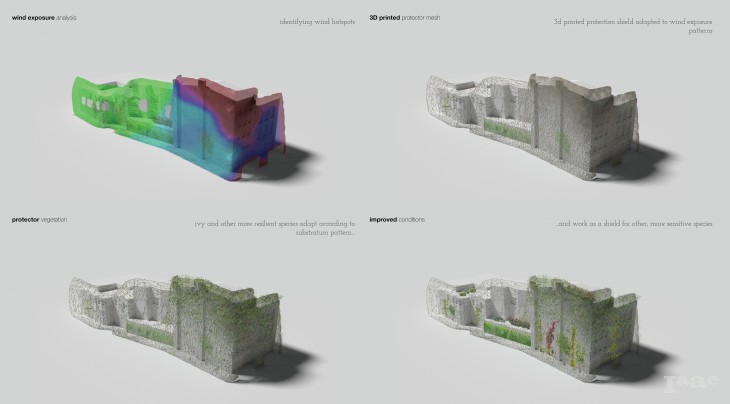
Hybritat is a project of IaaC, Institute for Advanced Architecture of Catalonia developed at Master in Advanced Architecture in 2016 by:
Student: Peter Geelmyden Magnus
Faculty: Willy Müller, Jordi Vivaldi Piera, Starsk Lara, Maite Bravo